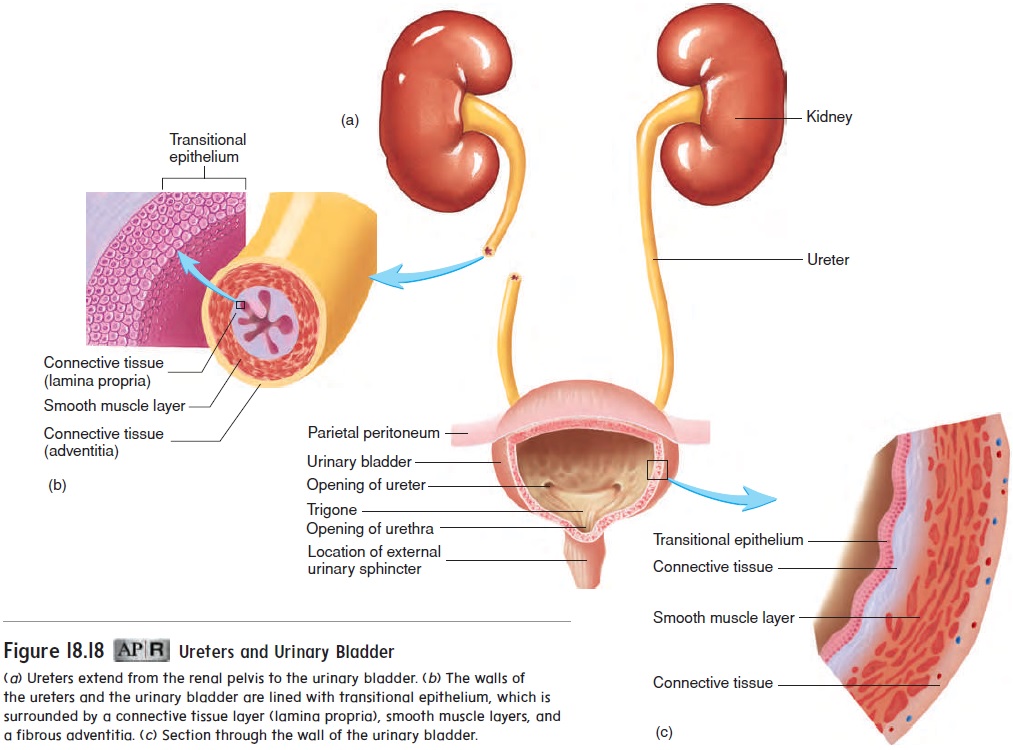Chapter: Essentials of Anatomy and Physiology: Urinary System and Fluid Balance
Filtration - Urine Production
Filtration
An average of 21% of the blood pumped by the heart each minute flows through the kidneys. Of the total volume of blood plasma that flows through the glomerular capillaries, about 19% passes through the filtration membrane into the Bowman capsule to become fil-trate. In all the nephrons of both kidneys, about 180 liters (L) of filtrate are produced each day, but only about 1% or less of the filtrate becomes urine because most of the filtrate is reabsorbed.
Filtration is a nonspecific process whereby materials are sepa-rated based on size or charge. A simple example of size filtration is demonstrated by a drip coffeemaker. In this case, the driving force of filtration is gravity. The kidneys also use size filtration to remove substances from the blood by filtering it, but in this case, the driving force of this filtration is blood pressure.
The filtration membrane allows some substances, but not oth-ers, to pass from the blood into the Bowman capsule. Water and small solutes readily pass through the openings of the filtration membrane, but blood cells and most proteins, which are too large, do not enter the Bowman capsule. One example of a small blood protein that can enter the filtrate in very small amounts is albumin. Consequently, the filtrate contains no cells and little protein.

Glomerular capillary pressure
Capsular pressure
Colloid osmotic pressure
Filtration pressure
The filtration pressure forces fluid from the glomerulus into the Bowman capsule because the glomerular capillary pressure is greater than both the capsular and the colloid osmotic pressures. Under most conditions, the filtration pressure remains within a narrow range of values. However, when the filtration pressure increases, both the filtrate volume and the urine volume increase, and when the filtration pressure decreases, both the filtrate volume and the urine volume decrease.
The filtration pressure is influenced by the blood pressure in the glomerular capillaries, the blood protein concentration, and the pressure in the Bowman capsule. The blood pressure is normally higher in the glomerular capillaries than it is in most capillaries. The filtration pressure increases if the blood pressure in the glomerular capillaries increases further. The filtration pressure decreases if the blood pressure in the glomerular capillaries decreases.
The filtration pressure is also influenced by the concentration of proteins in the blood. An increase in blood protein concentration encourages the movement of water by osmosis back into the glomeru-lar capillaries and therefore reduces the overall filtration pressure . On the other hand, a decrease in blood protein con-centration inhibits the movement of water by osmosis back into the glomerular capillaries, which increases the overall filtration pressure.

Related Topics